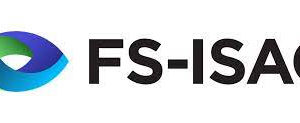Exploring Research Directions in Cybersecurity
ENISA, the European Union Agency for Cybersecurity, has identified key research directions and innovation topics in cybersecurity to support the efforts of the EU towards a Digital Strategic Autonomy.
Resilience, technological sovereignty and leadership are essential for the EU and as such, they are addressed by the new EU Cybersecurity Strategy. In an effort to support this cybersecurity strategy, the European Union Agency for Cybersecurity releases today a report intended to look into digital strategic autonomy in the EU and suggests future research directions.
What is Digital Strategic Autonomy?
Digital strategic autonomy can be defined as the ability of Europe to source products and services designed to meet the EU’s specific needs and values, while avoiding being subject to the influence of the outside world. In the digital world, such needs may encompass hardware, software or algorithms, manufactured as products and/or services, which should comply with the EU values, and thus preserve a fair digital ecosystem while respecting privacy and digital rights.
To ensure the sourcing of such products and/or services complies with the EU’s needs and values, the EU has the option to self-produce them autonomously, or in the case where products and services are acquired from third countries, to certify them and validate their compliance.
However, in cases where there is a high dependence on sourcing, the EU should still be capable of operating its digital infrastructures without giving rise to any possible detrimental influence. Hence, Europe needs to maintain the capability to produce its critical products and services independently.
In short, digital strategic autonomy means the capacity for the EU to remain autonomous in specific areas of society where digital technologies are used.
Why such a move?
The new challenges brought about by the digitalisation of our environment raise questions on our capacity to retain ownership and control of our personal data, of our technological assets and of our political stand. Such are the main dimensions to be considered under the idea of digital strategic autonomy.
Furthermore, the COVID-19 pandemic highlighted the importance of cybersecurity and the need for the EU to continue to invest in research & development in the digital sector. Within this context, ENISA’s report sets and prioritises the key research and innovation directions in cybersecurity.
Key Research Directions: which are they?
The report identifies the following seven key research areas:
- Data security;
- Trustworthy software platforms;
- Cyber threat management and response;
- Trustworthy hardware platforms;
- Cryptography;
- User-centric security practices and tools;
- Digital communication security.
For each of these areas, the report introduces the current state-of-play in the EU, includes an assessment of current and expected issues. The analyses included serve the purpose of issuing recommendations on cybersecurity related research topics. Such recommendations intend to highlight the bases needed to bolster the EU’s digital autonomy.



